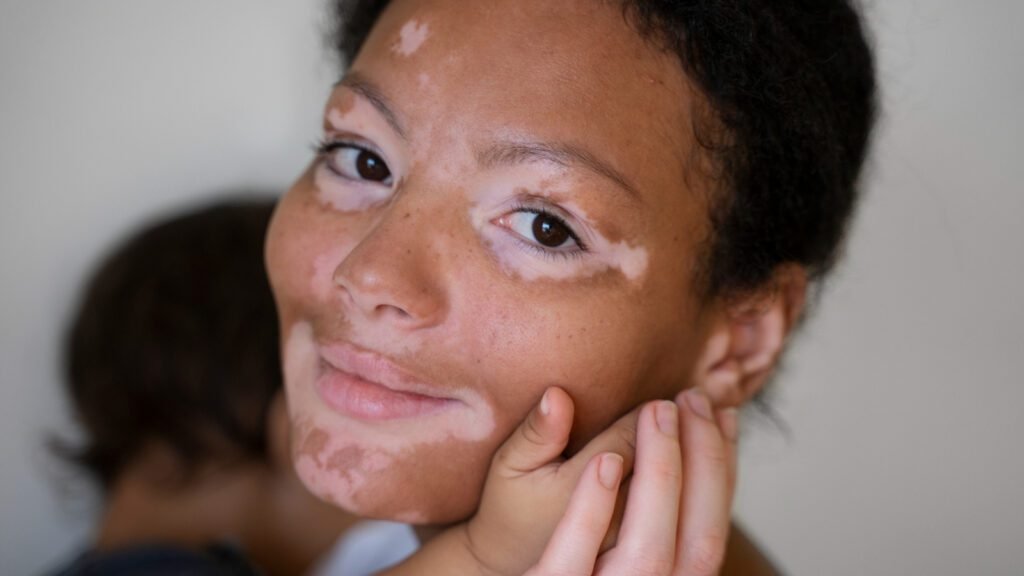Understanding Vitiligo: Myths, Causes, and Care
Vitiligo, a condition that affects millions globally, is often cloaked in misunderstanding. Simply recognizing its appearance is not enough; comprehending its implications, causes, and treatments is crucial for those living with it. This condition involves the loss of skin pigment, leading to noticeable white patches, and it can significantly impact one’s quality of life.
What is Vitiligo?
Vitiligo is a chronic autoimmune disorder characterized by the destruction of melanocytes, the cells responsible for skin pigmentation. This results in white or light-colored spots that can appear anywhere on the body, including the skin, hair, and mucous membranes. Understanding vitiligo is essential as a recent resolution by the World Health Assembly has recognized skin diseases, including vitiligo, as a global health priority, emphasizing the need for greater awareness and resources.
Key Facts about Vitiligo:
- Nature: Chronic autoimmune disease
- Appearance: White patches on skin
- Affected Areas: Skin, hair, and mucous membranes
What Causes Vitiligo?
The underlying mechanisms of vitiligo remain complex. According to dermatological experts, the condition can arise from various factors:
- Autoimmune Response: The body’s immune system mistakenly attacks melanocytes.
- Genetic Factors: Only 10-30% of cases are attributed to hereditary influences.
- Vitamin Deficiencies: Deficiencies in certain vitamins and minerals may also play a role.
- Associated Conditions: It is often linked to other autoimmune diseases, such as thyroid disorders.
Myths Surrounding Vitiligo:
Many misconceptions persist, leading to stigma and misinformation:
- Not Contagious: It’s crucial to recognize that vitiligo cannot be transmitted from one person to another.
- Cultural Superstitions: Some believe that vitiligo results from past life "sins," an unfounded theory without scientific backing.
- Genetic Stigma: Fears of marrying someone with vitiligo due to the belief that it can be inherited are baseless.
Notable Misbeliefs:
- "Vitiligo is contagious."
- "Poor hygiene causes vitiligo."
- "It’s a punishment from a higher power."
The Impact of Misconceptions
Such misunderstandings can lead to emotional distress, social withdrawal, and even anxiety among those affected. The stigma associated with vitiligo often results in isolation and delayed treatment.
Emotional and Social Consequences:
- Low Self-Esteem: Individuals may feel less confident due to visible skin differences.
- Social Isolation: Fear of discrimination can lead individuals to withdraw from social interactions.
- Anxiety and Stress: Misinformation often leads to heightened anxiety levels regarding one’s health.
The Importance of Education and Awareness
To dismantle these myths, education is paramount. Initiatives should focus on providing accurate information to combat stigma and promote acceptance.
Effective Strategies for Change:
- Open Conversations: Discuss vitiligo openly in families and communities to normalize the condition.
- Support Resources: Engage with mental health professionals and support groups to empower those affected.
- Healthcare Involvement: Professionals should provide clear, factual information to patients, alleviating fears and misconceptions.
Seeking Treatment and Support
Timely intervention is crucial for managing vitiligo effectively. Early diagnosis can prevent the progression of white patches and enhance the quality of life for those affected.
Treatment Approaches:
- Medical Interventions: Topical treatments and phototherapy may help restore skin color.
- Emotional Support: Counseling and support groups can assist in coping with the psychological effects of the condition.
- Community Support: Encouraging patient-led groups helps foster a sense of belonging and understanding.
Conclusion
Vitiligo is a complex condition often misunderstood due to pervasive myths and societal stigmas. By cultivating awareness and fostering open discussions, we can better support individuals living with vitiligo, allowing them to navigate their journey without the burden of misinformation.
For additional reading on skin conditions, please explore resources like the American Academy of Dermatology and World Health Organization.
This information serves as a guide, but always consult a healthcare professional for personalized advice.


